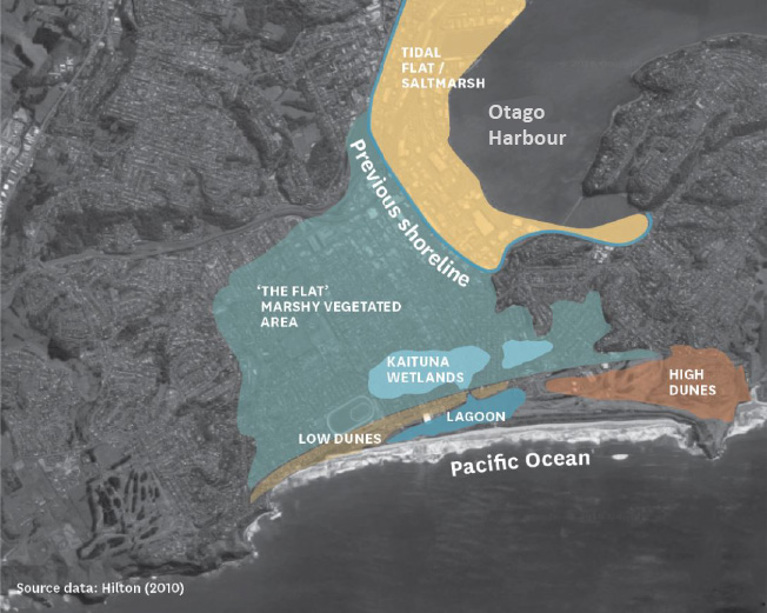-
-
-
-
-
-
-
A reclaimed history
-
-
-
-
-
South Dunedin is built on a low-lying plain covering an area of about 6km2, most of which sits less than three metres above sea level.

At the time of European settlement in the mid-1800s, the low-lying area known as ‘The Flat’ was generally a marshy environment, covered with silver tussock, rushes and flax. Along the harbour margin was a wide, tidal mud flat. At the coast, low sand dunes (much lower than they are today) and a large lagoon extended from St Clair/St Kilda to the Lawyers Head beach area.
The landscape would have looked similar to what we see at Hoopers Inlet today.
Strong demand for level, dry land in Dunedin in the mid-to-late-1800s drove European settlers to reclaim, or fill in the wet, low areas with any available material. This included using sand along the harbour margin and in the wetland areas of South Dunedin.
This reclamation transformed the area and hugely increased the amount of available building land. The area is now home for around 13,000 people, as well as many schools and critical infrastructure which the wider city relies on.
Looking at the area now, it’s easy to think the lagoon is long dried up, but underneath the built-up surface, marshy conditions remain.
The mixture of sand and silt that lies beneath South Dunedin absorbs water from rainfall, and this underground water, (groundwater) usually sits about half a metre beneath the ground surface.

The groundwater table rises and falls with the tides and seasonal conditions. Excess water from rainfall and surface runoff is soaked up by the ground like a sponge and transported towards the sea.
